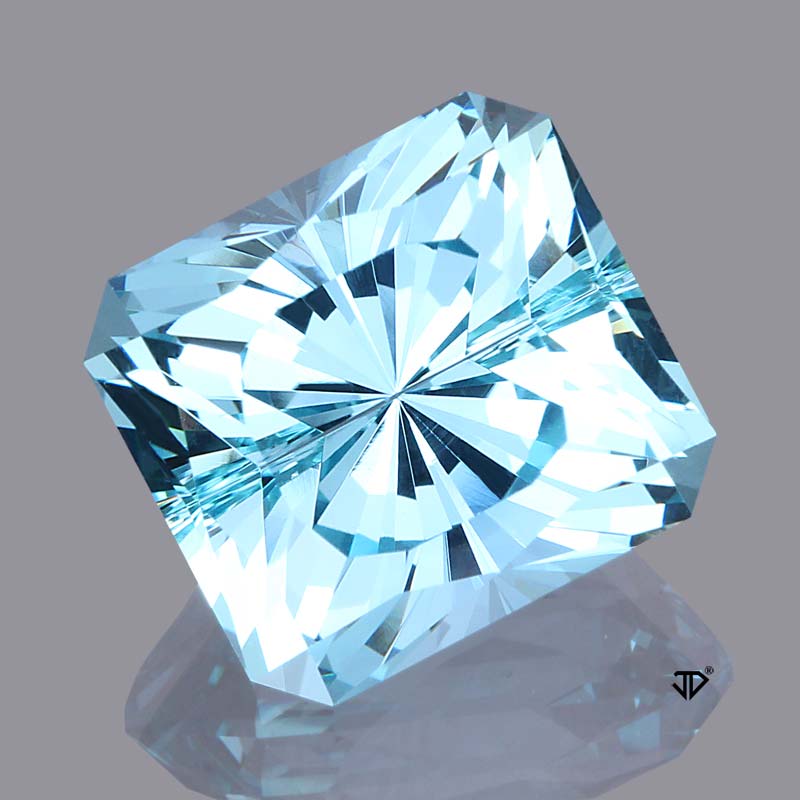

Which one is your favorite? We personally love the look of aquamarine set in rose gold. Originally set in yellow gold, we edited the ring to show you just how well aquamarine pairs with other precious metals. Furthermore, aquamarine looks fabulous set in every type of metal.
AQUAMARINE BIRTHSTONE SKIN
This beautiful gemstone also looks lovely on every skin type. Whether you’re casually shopping with some friends or attending a gala, aquamarine is always a dazzling choice. The cool tones of aquamarine make it easy to match with any outfit for any occasion. However, the March birthstone is more valuable due to its rarity and natural coloring. Because of its color, aquamarine is oftentimes mistaken for blue topaz. This beautiful blue gemstone is available in a variety of breathtaking sea-blue colors ranging from pale light blue to medium-dark blue. But what shade of blue are you envisioning? Is it a bright, brilliant blue? Or is it a soft, pale blue? Either way, it’s still aquamarine.

When you think about aquamarine you immediately think of the color blue. When leaving on long voyages, sailors wore or carried aquamarines with the belief the gemstone would help them return safely to their families. Because of its sea-blue color, aquamarine was believed to protect against seasickness and unexpected accidents. Why sailors? Legend said aquamarines were the prized possessions of mermaids and would thus protect sailors from dangers at sea. Historically, aquamarine is a popular gemstone amongst sailors. Remember when we mentioned the myths regarding aquamarine’s relationship with the sea? Let’s dive right in! It’s not just this gemstones’ name that links it to the sea. The vast abundance of aquamarine makes for larger pieces of jewelry at a fairly affordable price. In fact, aquamarine is the official state gemstone of Colorado. Aquamarine is also mined right here in the United States in states like California and Colorado. Mines extracting gem quality material can be found in Pakistan, Kenya, Sri Lanka, and Madagascar. While the most valuable aquamarines are mined in Columbia and Brazil, the March birthstone has been found in many locations all around the world. Unlike its cousin emerald, the March birthstone can form in stunning, flawless crystals with very few, if any, inclusions. Including gemstone cousins of emerald and morganite that are also beryl, it’s obvious that beauty runs in the family! Aquamarine forms in crystals that can be fairly large and totally transparent. Aquamarine is the greenish-blue to blue variety of beryl. Beryl is a very popular and alluring mineral because of its diversity of colors. This actually led to a few myths about the March birthstone, and we’ll get to that shortly.Īquamarine belongs to the beryl family of minerals. Named for the ocean’s purest shades of blue, the literal translation of ‘aquamarine’ is ‘ water of the sea.’ In fact, Ancient Greeks and Romans believed aquamarine originated in the treasure chests of mermaids out in the big blue. When you hear the word ‘aquamarine’ visions of crystal clear waves and clear blue skies dance through your mind. But how much do you really know about this month’s beautiful blue gemstone? To celebrate your birthday month, we’ve gathered 10 fun facts about your fabulous birthstone. Happy birthday to all you March babies! If you’re a March baby or you’re shopping for one, you probably already know the March birthstone is aquamarine.


 0 kommentar(er)
0 kommentar(er)
